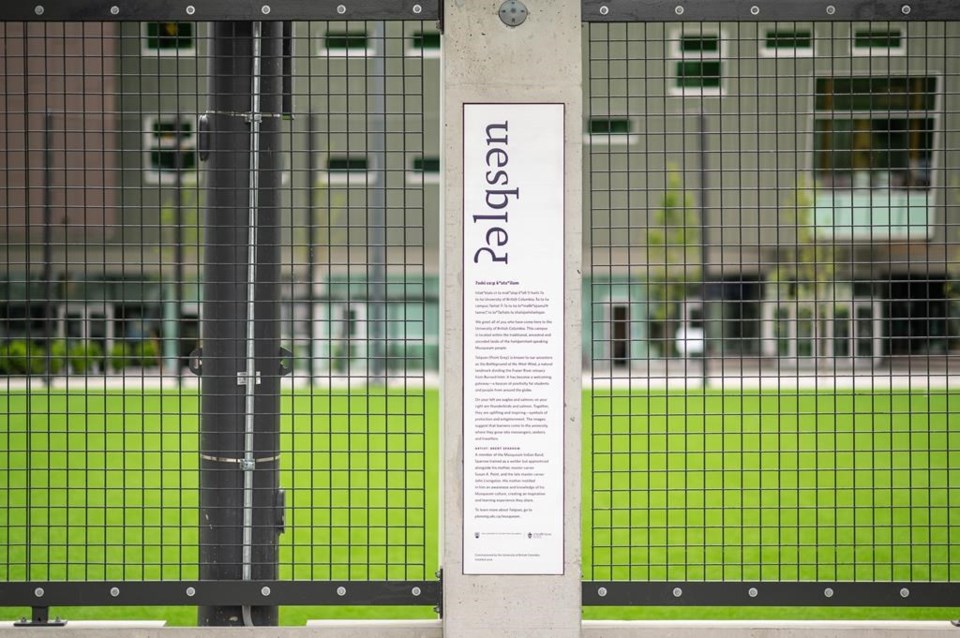VANCOUVER — A new font to typeset Salish Indigenous languages means so much more than just the words that it will be used to write, one of the people behind its creation says.Â
Vanessa Campbell, a Musqueam band member and staff member in its Language and Culture Department, was part of a team from the University of British Columbia that designed a new font which allows characters from the Musqueam language to not only be easily typed on a computer, but to match the formal institutional font used on university documentation and signs.
The name of the Musqueam language is pronounced HUN-kuh-mee-num and in the Indigenous font it has characters that appear similar to inverted Es with accents over four other letters.Â
Most of the characters in the name aren't available on an English language keyboard.Â
Campbell said it has taken four years of work to get the font right and is an example of reconciliation in action, and a sign of respect for the Indigenous people whose land the university is on.
"As a Musqueam woman, UBC acknowledging the importance of being able to respectfully represent my language in their space, on my territory, through the branding font that they use, it's inherently created this space of mutual respect and caring for this language that I spend my whole life working on," she said.
"I love that I can just type in Whitney, but there's so much more emotional importance to the partnership that was created around this font," she said, referring to the font's name of Whitney Salishan.Â
Their languagewas traditionally oral, but over the last few decades the Musqueam have begun deciding how to put it into writing.Â
Leaders chose the North American phonetic alphabet since it offered sounds used in their language that aren't available with the Latin alphabet used in modern English.
Matt Warburton, brand and marketing design manager for the University of B.C., said the phonetic alphabet has created unique challenges in the digital world.Â
Only a few computer fonts recognize the characters, he said, meaning anyone who wants to use the language is limited in their options or forced to switch fonts mid-sentence.
"It basically just looks like somebody … kind of crammed something in as an afterthought after the fact, which is really disrespectful of another language," he said.
"You know, we wouldn't do that with French, we wouldn't do it with any of the Asian languages. It's just something that's not done," Warburton said.Â
The new font is also capable of typesetting the language of the Syilx, a nation located in the same area as the university's Okanagan campus.Â
The university's institutional font, used in most of its branded signs and documents, is called Whitney. For years before the creation of Whitney Salishan, Warburton said they would manually design characters in the Musqueam and Syilx languages whenever the university needed them for a project.
He said the work was important but time consuming.Â
Now that the new font can be uploaded to university computers, Warburton said he has given out about 100 licences and expects more requests.Â
The next steps will be creating a version that can be used on the university's websites, and to expand to accommodate more Indigenous languages. Eventually, it's expected that licences for the font will be sold to the public from the company that helped create it and owns both Whitney and Whitney Salishan.Â
Campbell said she hopes the font will be used more around her community.
"And so, I am most excited to start using it in spaces where we are actively working to incorporate (the Musqueam language) back into the land," she said.Â
When the font was first completed, Warburton used it to type up parts of a Musqueam legend, displaying different thickness of the font to show how it could be used.
Campbell said that even though she had spent years going through the design and approval process for individual characters, seeing them all together at once was emotional.
"I've never seen my language look so beautiful on paper."
This report by The Canadian Press was first published June 7, 2023
Ashley Joannou, The Canadian Press




